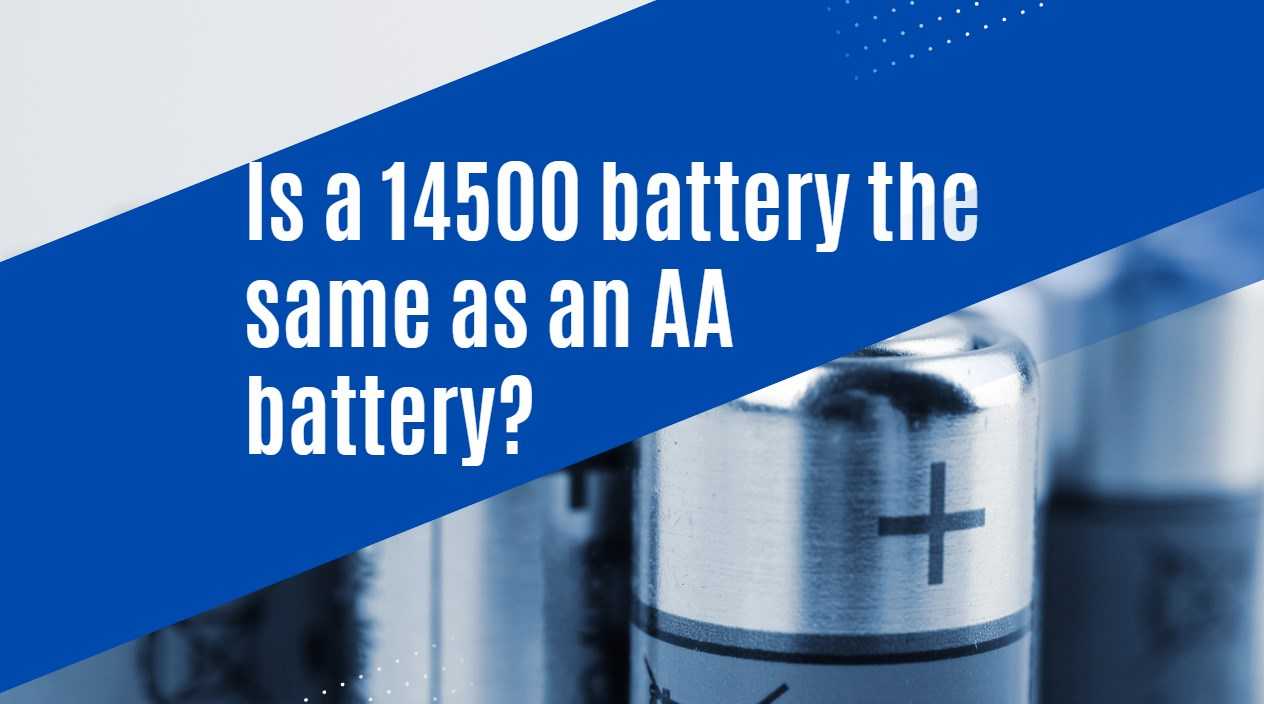No, a 14500 battery is not the same as an AA battery despite similar dimensions; it is a lithium-ion cell with different chemistry that requires compatible devices designed specifically for lithium-ion technology.

Are you tired of constantly replacing your AA batteries and wondering if there’s a more powerful alternative out there? Enter the 14500 battery – a small but mighty power source that could change the way you think about traditional batteries. In this blog post, we’ll explore the differences between these two types of batteries and whether a 14500 battery can be your new go-to choice! Let’s dive in and discover the world of portable power together.
What are the nominal voltages of these batteries?
When it comes to battery voltages, understanding the differences between 14500 and AA batteries is essential. A 14500 battery typically has a nominal voltage of around 3.7 volts, making it ideal for devices that require higher power outputs.
On the other hand, an AA battery usually has a nominal voltage of about 1.5 volts. This lower voltage is suitable for devices with less power consumption or those designed for standard alkaline batteries.
The variance in nominal voltages between these two types of batteries can impact the performance and compatibility with different devices. It’s crucial to consider these differences when selecting the appropriate battery for your specific needs.
Whether you opt for a higher voltage 14500 battery or stick with the standard AA option will depend on your device requirements and power demands. Understanding these distinctions will help you make informed decisions when choosing the right battery for your electronic devices.
Can a 14500 battery be used as a direct replacement for an AA battery?
Have you ever wondered if a 14500 battery can be used interchangeably with an AA battery? The short answer is yes, but there are some important factors to consider.
The nominal voltage of a 14500 battery is around 3.7 volts, which is higher than the typical 1.5 volts of an AA battery. This means that using a 14500 in place of an AA may not always be suitable for all devices.
While both batteries are cylindrical in shape and have similar dimensions, the chemistry used in each differs – with the 14500 typically being lithium-ion while AAs are usually alkaline or nickel-metal hydride.
It’s essential to check your device’s compatibility before making the switch to ensure optimal performance and safety.
Are these batteries rechargeable?
When it comes to rechargeability, 14500 and AA batteries have some differences. While AA batteries are available in both disposable and rechargeable options, 14500 batteries are typically rechargeable lithium-ion cells.
The ability to be recharged makes 14500 batteries more cost-effective and environmentally friendly in the long run compared to single-use AA batteries. This feature also allows for multiple uses before needing replacement, which can be convenient for certain devices like flashlights or remote controls that require frequent battery changes.
It’s important to note that not all 14500 batteries are designed for recharging purposes. It’s essential to check the specifications of the battery before attempting to recharge it to avoid any safety risks or damage to the device using it.
Understanding whether a battery is rechargeable or not can help you make an informed decision based on your needs and preferences.
What chemistries are used in these batteries?
When it comes to the chemistry used in 14500 and AA batteries, there are a few key differences.

AA batteries typically use alkaline chemistry, which is known for its stable performance and affordability. On the other hand, 14500 batteries often utilize lithium-ion chemistry, offering higher energy density and longer lifespan.
The choice of chemistry impacts various aspects of battery performance, including voltage output, capacity retention over time, and rechargeability.
Alkaline AA batteries tend to have a nominal voltage of around 1.5 volts per cell, while lithium-ion 14500 batteries usually operate at 3.7 volts per cell.
Understanding the chemistry behind these batteries can help you choose the right option for your specific needs and devices.
What are the voltage differences between 14500 and AA batteries?
While 14500 and AA batteries may appear similar in size, they have significant differences in their nominal voltages. The 14500 battery typically has a higher voltage of 3.7V compared to the 1.5V of an AA battery. This voltage disparity means that a 14500 battery cannot be used as a direct replacement for an AA battery without potential damage to devices or equipment.
When choosing between these two types of batteries, it’s essential to consider their specific applications and requirements. Whether you need a higher voltage for power-hungry devices or standard voltage for everyday gadgets, understanding the distinctions between 14500 and AA batteries will help you make informed decisions for your energy needs.


